Unit 3 Function 课件(共20张PPT) 2024-2025学年仁爱科普版(2024)英语七年级上册
文档属性
| 名称 | Unit 3 Function 课件(共20张PPT) 2024-2025学年仁爱科普版(2024)英语七年级上册 | 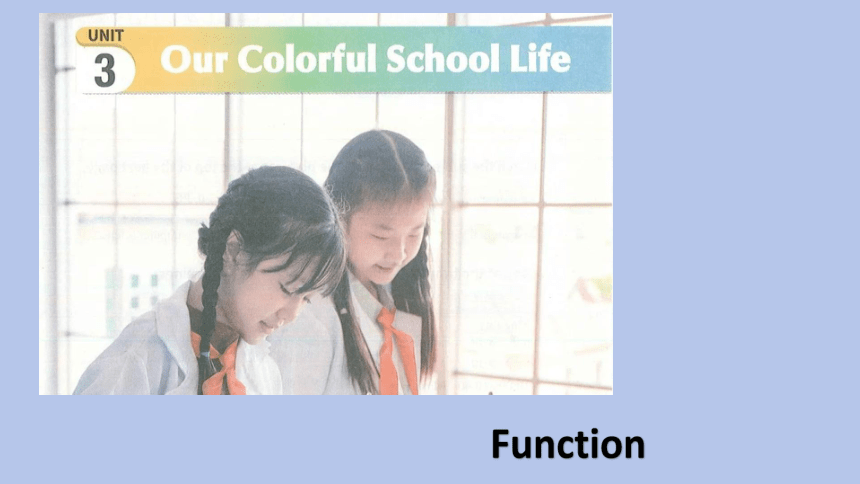 | |
| 格式 | pptx | ||
| 文件大小 | 2.1MB | ||
| 资源类型 | 教案 | ||
| 版本资源 | 仁爱科普版 | ||
| 科目 | 英语 | ||
| 更新时间 | 2024-12-15 19:56:44 | ||
图片预览

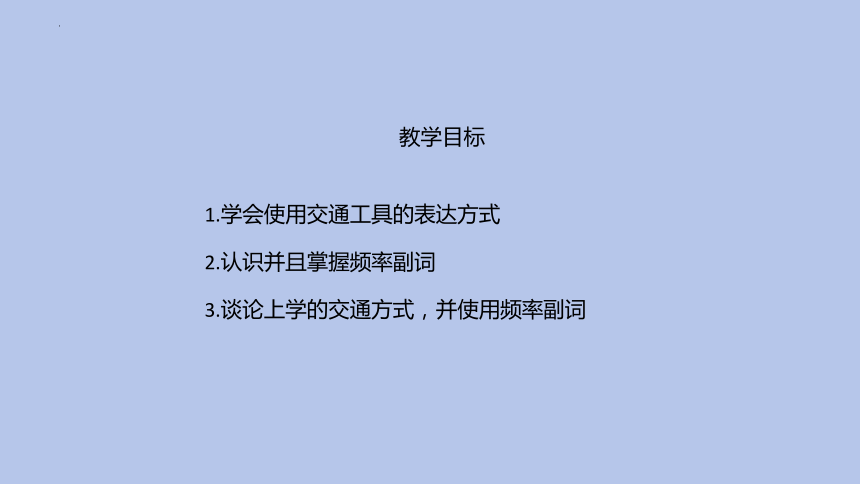
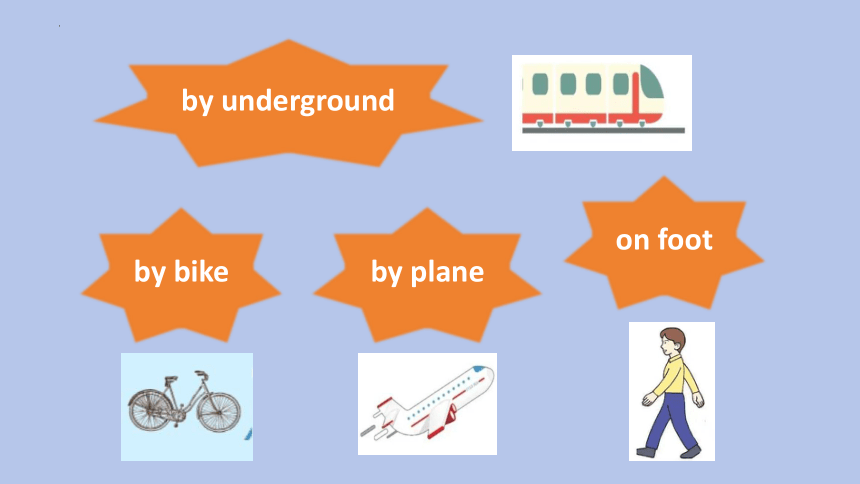
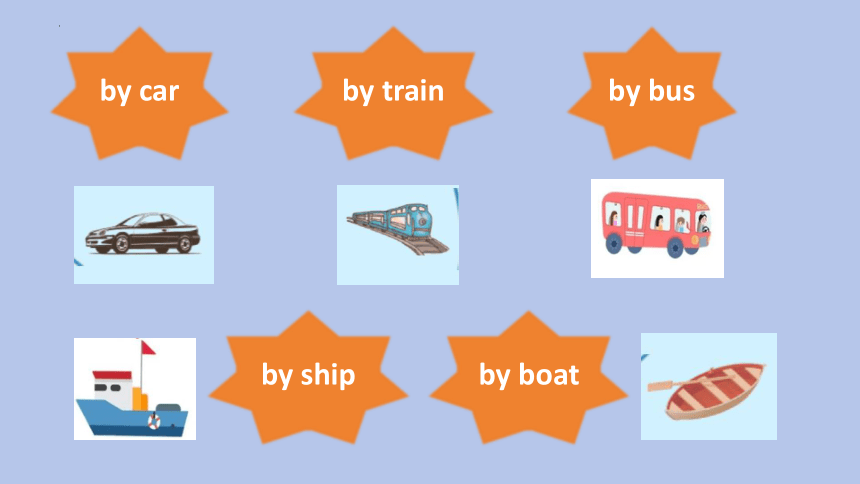
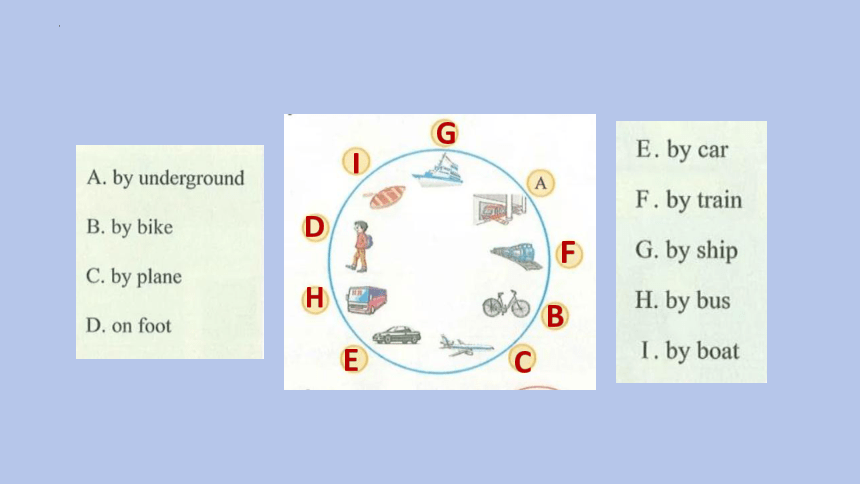
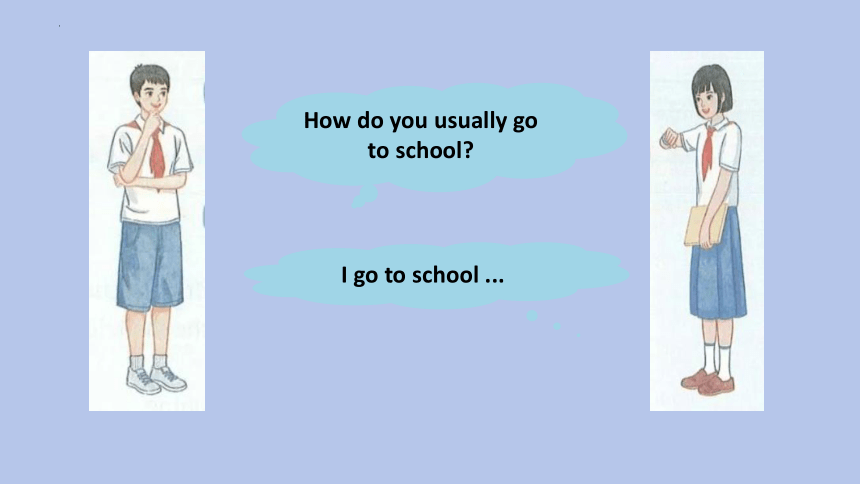
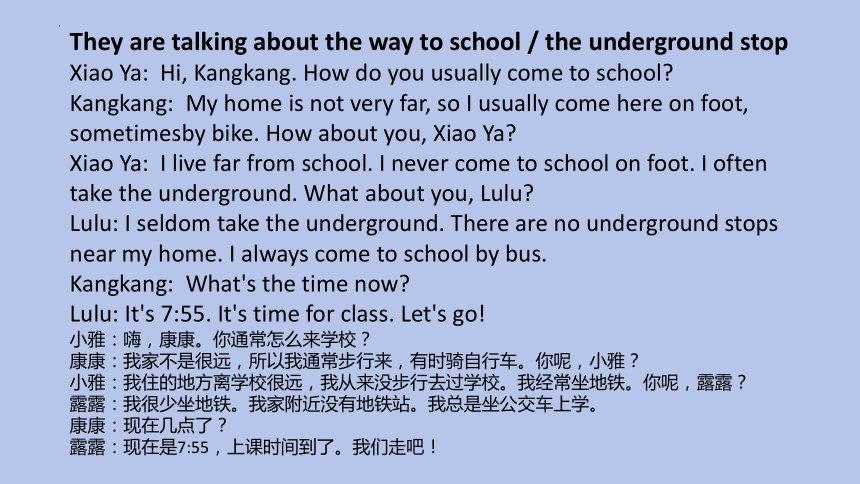
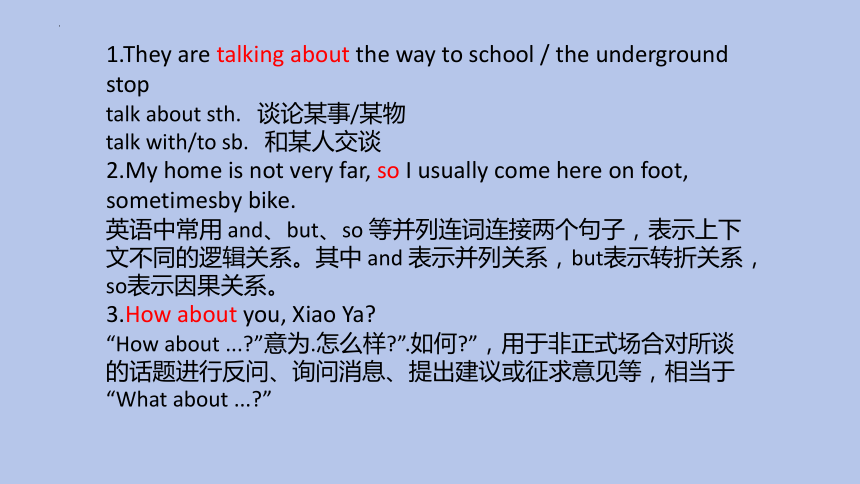
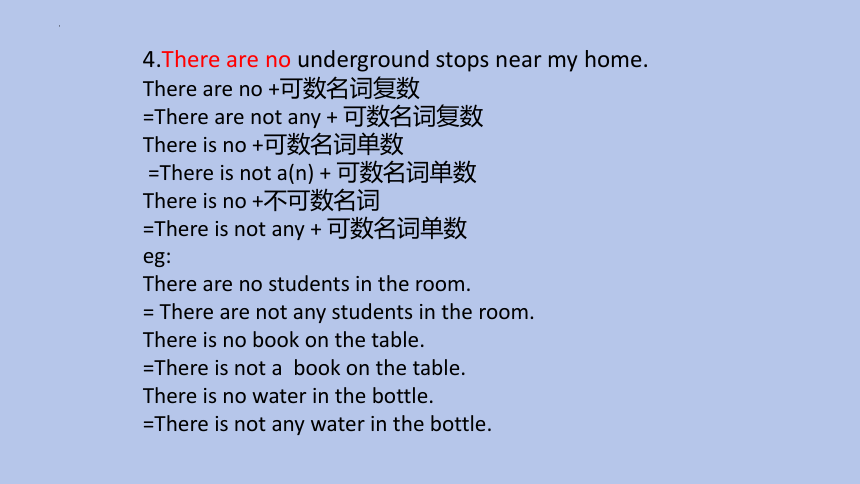
文档简介
(共20张PPT)
Function
教学目标
1.学会使用交通工具的表达方式
2.认识并且掌握频率副词
3.谈论上学的交通方式,并使用频率副词
by bike
by plane
by underground
on foot
by ship
by boat
by car
by train
by bus
G
I
D
H
F
B
E
C
I go to school ...
How do you usually go to school
They are talking about the way to school / the underground stop
Xiao Ya: Hi, Kangkang. How do you usually come to school
Kangkang: My home is not very far, so I usually come here on foot, sometimesby bike. How about you, Xiao Ya
Xiao Ya: I live far from school. I never come to school on foot. I often take the underground. What about you, Lulu
Lulu: I seldom take the underground. There are no underground stops near my home. I always come to school by bus.
Kangkang: What's the time now
Lulu: It's 7:55. It's time for class. Let's go!
小雅:嗨,康康。你通常怎么来学校?
康康:我家不是很远,所以我通常步行来,有时骑自行车。你呢,小雅?
小雅:我住的地方离学校很远,我从来没步行去过学校。我经常坐地铁。你呢,露露?
露露:我很少坐地铁。我家附近没有地铁站。我总是坐公交车上学。
康康:现在几点了?
露露:现在是7:55,上课时间到了。我们走吧!
1.They are talking about the way to school / the underground stop
talk about sth. 谈论某事/某物
talk with/to sb. 和某人交谈
2.My home is not very far, so I usually come here on foot, sometimesby bike.
英语中常用 and、but、so 等并列连词连接两个句子,表示上下文不同的逻辑关系。其中 and 表示并列关系,but表示转折关系,so表示因果关系。
3.How about you, Xiao Ya
“How about ... ”意为.怎么样 ”.如何 ”,用于非正式场合对所谈的话题进行反问、询问消息、提出建议或征求意见等,相当于“What about ... ”
4.There are no underground stops near my home.
There are no +可数名词复数
=There are not any + 可数名词复数
There is no +可数名词单数
=There is not a(n) + 可数名词单数
There is no +不可数名词
=There is not any + 可数名词单数
eg:
There are no students in the room.
= There are not any students in the room.
There is no book on the table.
=There is not a book on the table.
There is no water in the bottle.
=There is not any water in the bottle.
使用交通共同表达
用介词"by+交通工具"
注意 by 后不能加 a/an/the/one's/this/that 等限定词,交通工具名词也不能用复数。
by bus 乘公共汽车
by plane 乘飞机
by train 乘火车
by car 乘小汽车 by taxi 乘出租车
by ship 乘轮船
by subway 乘地铁
by boat 乘船
by后接某些名词,也可表示交通方式,
如:by sea(乘船), by air(乘飞机), by water(乘船)。
使用交通共同表达
用介词“in (on)+冠词(形代)+交通工具”
on (人可以站起身行走在这个交通工具上面,on a/the bus/train/plane/subway/ship)
in (人不可以在里面直立行走,空间比较小,in a/the car/taxi)
使用交通共同表达
take/drive/ride+限定词(a/the)+交通工具名词
take a/the plane
take a/the bus
take a/the train
take a/the ship + to school
take the subwaytake/drive a/the car
take a/the taxi
使用交通共同表达
“动词+to”表示交通方式: 如果后面接地点副词here/there/home等,介词to应省略。
take the car / train / bus/ taxi/ plane/ ship + to + 地点
=get to+地点 + by car/ train / bus/ taxi/ plane/ ship...
ride the bike + to + 地点 = get to + 地点 + by bike
walk to + 地点 = get to +地点+ on foot
Xiao Ya: Hi, Kangkang. How do you usually come to school
Kangkang: My home is not very far, so I usually come here on foot, sometimes by bike. How about you, Xiao Ya
Xiao Ya: I live far from school. I never come to school on foot. I often take the underground. What about you, Lulu
Lulu: I seldom take the underground. There are no underground stops near my home. I always come to school by bus.
Kangkang: What's the time now
Lulu: It's 7:55. It's time for class. Let's go!
1. Kangkang usually comes to school on foot.
2. Kangkang _________ comes to school by bike.
3. Xiao Ya _________ comes to school on foot.
4. Xiao Ya _________ comes to school by underground.
5. Lulu _________ comes to school by underground.
6. Lulu _________ comes to school by bus.
sometimes
never
often
seldom
always
Frequency Adverb
100% always
80-90% usually
60-70% often
30-50% sometimes
10-20% seldom
0% never
对频度副词提问: How often 表示“多久一次”
How often does he go home
He seldom goes home.
How often do you go swimming
I go swimming every day.
Name Vehicle Resaon
Kangkang usually on foot,sometimes by bike His home is not very far
Xiao Ya never on foot,often takes the underground She lives far from school
Lulu seldom takes the underground,always by bus There are no underground stops near her home
...
How do you usually come to school
Panel discussion
show time
☆☆☆
loud voice
fluent language
correct grammar
Panel discussion
Function
教学目标
1.学会使用交通工具的表达方式
2.认识并且掌握频率副词
3.谈论上学的交通方式,并使用频率副词
by bike
by plane
by underground
on foot
by ship
by boat
by car
by train
by bus
G
I
D
H
F
B
E
C
I go to school ...
How do you usually go to school
They are talking about the way to school / the underground stop
Xiao Ya: Hi, Kangkang. How do you usually come to school
Kangkang: My home is not very far, so I usually come here on foot, sometimesby bike. How about you, Xiao Ya
Xiao Ya: I live far from school. I never come to school on foot. I often take the underground. What about you, Lulu
Lulu: I seldom take the underground. There are no underground stops near my home. I always come to school by bus.
Kangkang: What's the time now
Lulu: It's 7:55. It's time for class. Let's go!
小雅:嗨,康康。你通常怎么来学校?
康康:我家不是很远,所以我通常步行来,有时骑自行车。你呢,小雅?
小雅:我住的地方离学校很远,我从来没步行去过学校。我经常坐地铁。你呢,露露?
露露:我很少坐地铁。我家附近没有地铁站。我总是坐公交车上学。
康康:现在几点了?
露露:现在是7:55,上课时间到了。我们走吧!
1.They are talking about the way to school / the underground stop
talk about sth. 谈论某事/某物
talk with/to sb. 和某人交谈
2.My home is not very far, so I usually come here on foot, sometimesby bike.
英语中常用 and、but、so 等并列连词连接两个句子,表示上下文不同的逻辑关系。其中 and 表示并列关系,but表示转折关系,so表示因果关系。
3.How about you, Xiao Ya
“How about ... ”意为.怎么样 ”.如何 ”,用于非正式场合对所谈的话题进行反问、询问消息、提出建议或征求意见等,相当于“What about ... ”
4.There are no underground stops near my home.
There are no +可数名词复数
=There are not any + 可数名词复数
There is no +可数名词单数
=There is not a(n) + 可数名词单数
There is no +不可数名词
=There is not any + 可数名词单数
eg:
There are no students in the room.
= There are not any students in the room.
There is no book on the table.
=There is not a book on the table.
There is no water in the bottle.
=There is not any water in the bottle.
使用交通共同表达
用介词"by+交通工具"
注意 by 后不能加 a/an/the/one's/this/that 等限定词,交通工具名词也不能用复数。
by bus 乘公共汽车
by plane 乘飞机
by train 乘火车
by car 乘小汽车 by taxi 乘出租车
by ship 乘轮船
by subway 乘地铁
by boat 乘船
by后接某些名词,也可表示交通方式,
如:by sea(乘船), by air(乘飞机), by water(乘船)。
使用交通共同表达
用介词“in (on)+冠词(形代)+交通工具”
on (人可以站起身行走在这个交通工具上面,on a/the bus/train/plane/subway/ship)
in (人不可以在里面直立行走,空间比较小,in a/the car/taxi)
使用交通共同表达
take/drive/ride+限定词(a/the)+交通工具名词
take a/the plane
take a/the bus
take a/the train
take a/the ship + to school
take the subwaytake/drive a/the car
take a/the taxi
使用交通共同表达
“动词+to”表示交通方式: 如果后面接地点副词here/there/home等,介词to应省略。
take the car / train / bus/ taxi/ plane/ ship + to + 地点
=get to+地点 + by car/ train / bus/ taxi/ plane/ ship...
ride the bike + to + 地点 = get to + 地点 + by bike
walk to + 地点 = get to +地点+ on foot
Xiao Ya: Hi, Kangkang. How do you usually come to school
Kangkang: My home is not very far, so I usually come here on foot, sometimes by bike. How about you, Xiao Ya
Xiao Ya: I live far from school. I never come to school on foot. I often take the underground. What about you, Lulu
Lulu: I seldom take the underground. There are no underground stops near my home. I always come to school by bus.
Kangkang: What's the time now
Lulu: It's 7:55. It's time for class. Let's go!
1. Kangkang usually comes to school on foot.
2. Kangkang _________ comes to school by bike.
3. Xiao Ya _________ comes to school on foot.
4. Xiao Ya _________ comes to school by underground.
5. Lulu _________ comes to school by underground.
6. Lulu _________ comes to school by bus.
sometimes
never
often
seldom
always
Frequency Adverb
100% always
80-90% usually
60-70% often
30-50% sometimes
10-20% seldom
0% never
对频度副词提问: How often 表示“多久一次”
How often does he go home
He seldom goes home.
How often do you go swimming
I go swimming every day.
Name Vehicle Resaon
Kangkang usually on foot,sometimes by bike His home is not very far
Xiao Ya never on foot,often takes the underground She lives far from school
Lulu seldom takes the underground,always by bus There are no underground stops near her home
...
How do you usually come to school
Panel discussion
show time
☆☆☆
loud voice
fluent language
correct grammar
Panel discussion
同课章节目录
